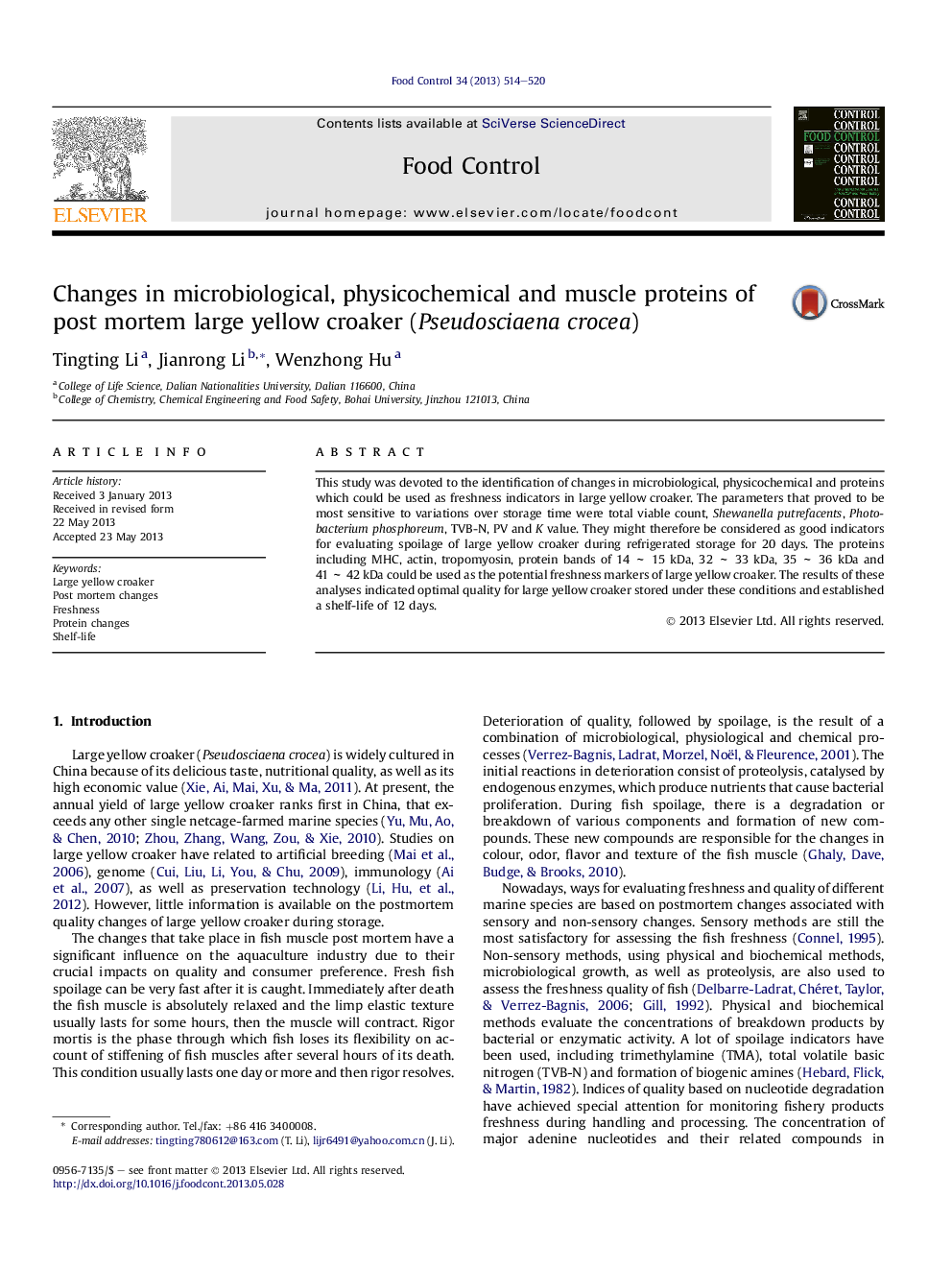| Article ID | Journal | Published Year | Pages | File Type |
|---|---|---|---|---|
| 6392352 | Food Control | 2013 | 7 Pages |
Abstract
This study was devoted to the identification of changes in microbiological, physicochemical and proteins which could be used as freshness indicators in large yellow croaker. The parameters that proved to be most sensitive to variations over storage time were total viable count, Shewanella putrefacents, Photobacterium phosphoreum, TVB-N, PV and K value. They might therefore be considered as good indicators for evaluating spoilage of large yellow croaker during refrigerated storage for 20 days. The proteins including MHC, actin, tropomyosin, protein bands of 14 ï½Â 15 kDa, 32 ï½Â 33 kDa, 35 ï½Â 36 kDa and 41 ï½Â 42 kDa could be used as the potential freshness markers of large yellow croaker. The results of these analyses indicated optimal quality for large yellow croaker stored under these conditions and established a shelf-life of 12 days.
Related Topics
Life Sciences
Agricultural and Biological Sciences
Food Science
Authors
Tingting Li, Jianrong Li, Wenzhong Hu,
